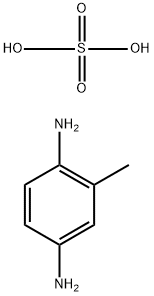- 20,22-DIHYDRODIGITOXIN
- 20,29,30-Trinorlupane,(17alpha)-
- 20-ETHYL-6-β,8-DIHYDROXY-1-α-METHOXY-4-METHYLHETERATISAN-14-ONE
- 20-Ethylprostaglandin F2-alpha
- 20-Isopropylcholanthrene
- 20-METHYLCHOLANTHREN-15-ONE
- 20-METHYLCHOLANTHRENE PICRATE
- 20-METHYLCHOLANTHRENE-TRINITRO-BENZENE
- 20(S)-Ginsenoside C-K
- 2,10-DIFLUOROBENZO(rst)PENTAPHENE
- 61551-49-32-Naphthalenesulfonylchloride, 5,6,7,8-tetrahydro-
- 61551-69-7Propanamide,2,2'-(1,2-diazenediyl)bis[N-(2-hydroxyethyl)-2-methyl-
- 615534-73-11H-1,2,4-Triazole,1-[(3-iodophenyl)methyl]-
- 6155-35-7a-L-Mannopyranose, 6-deoxy-,monohydrate (9CI)
- 61553-69-32H-1,4-Benzoxazin-2-one,3-(2-oxo-2-phenylethyl)-
- 61553-71-72-Amino-4-(trifluoromethyl)benzoic
- 615537-19-4Benzenebutanoic acid, b-amino-4-hydroxy-, (bS)-
- 615-54-3Benzene,1,2,4-tribromo-
- 615556-98-4Rosuvastatin intermediate
- 615556-99-5Pentanedioic acid, 3-[[(1,1-dimethylethyl)dimethylsilyl]oxy]-, 1-(1,1-dimethylethyl) 5-ethyl ester,(3R)-
Hot Products
- 580-13-22-Bromonaphthalene
- 161797-99-55-Thiazolecarboxylicacid, 2-(4-hydroxyphenyl)-4-methyl-, ethyl ester
- 51-42-3Epinephrine bitartrate
- 127-65-1Benzenesulfonamide,N-chloro-4-methyl-, sodium salt (1:1)
- 636-61-3D(+)-Malic acid
- 6805-41-0Escin
- 611-10-9Cyclopentanecarboxylicacid, 2-oxo-, ethyl ester
- 593-56-6Hydroxylamine,O-methyl-, hydrochloride (1:1)
- 104987-11-3Tacrolimus
- 141-53-7Sodium formate
- 8001-54-5Quaternary ammonium compounds, alkylbenzyldimethyl, chlorides
- 9003-39-8Povidone
- 10161-34-9Trenbolone acetate
- 402957-28-2Telaprevir
- 68-19-9Cyanocobalamin

|
Basic Information |

|
Post buying leads |

|
Suppliers |

| Name |
2,5-Diaminotoluene sulfate |
EINECS | 210-431-8 |
| CAS No. | 615-50-9 | Density | 1366[at 20℃] |
| PSA | 135.02000 | LogP | 2.74980 |
| Solubility | soluble in water | Melting Point |
>300 °C(lit.) |
| Formula | C7H10N2.H2SO4 | Boiling Point | 273.7 °C at 760 mmHg |
| Molecular Weight | 220.249 | Flash Point | 140.6 °C |
| Transport Information | UN 2811 6.1/PG 3 | Appearance | powder |
| Safety | 24-37-45-61 | Risk Codes | 20/21-25-43-51/53 |
| Molecular Structure |
|
Hazard Symbols |
 T, T,  N N
|
| Synonyms |
Toluene-2,5-diamine sulfate;Toluene-2,5-diamine, sulfate (1:1);2-Methyl-p-phenylenediamine sulfate;Toluylene-2,5-diamine sulfate;2-methylbenzene-1,4-diamine;p-Toluenediamine sulfate;2-Methyl-1,4-benzenediamine sulfate;1,4-Benzenediamine, 2-methyl-, sulfate (1:1);p-Toluylenediamine sulfate;2,5-Toluenediamine sulfate;CI 76043;Toluene-2,5-diamine, sulfate;2,5-Diamino toluene sulfate;p-Tolylenediamine sulfate;2,5-Diaminamethyl pheneesulfate;Jarocol TDS; |
2,5-Diaminotoluene sulfate Synthetic route
- 615-50-9
2-methyl(p-phenylenediamine) dihydrogen sulfate

- 4755-77-5
Ethyl oxalyl chloride

- 1392473-01-6
Et2H2Meppba

| Conditions | Yield |
|---|---|
| With triethylamine In tetrahydrofuran for 1h; Reflux; | 80% |
| With triethylamine In tetrahydrofuran at 0℃; for 1h; Reflux; | 80% |

- 615-50-9
2-methyl(p-phenylenediamine) dihydrogen sulfate

| Conditions | Yield |
|---|---|
| With benzotriazol-1-yloxyl-tris-(pyrrolidino)-phosphonium hexafluorophosphate; N-ethyl-N,N-diisopropylamine In N,N-dimethyl-formamide at 20℃; Inert atmosphere; | 79% |
- 50890-83-0
1-methyl-1H-indazole-3-carboxylic acid

- 615-50-9
2-methyl(p-phenylenediamine) dihydrogen sulfate

| Conditions | Yield |
|---|---|
| With benzotriazol-1-yloxyl-tris-(pyrrolidino)-phosphonium hexafluorophosphate; N-ethyl-N,N-diisopropylamine In N,N-dimethyl-formamide at 20℃; for 72h; Inert atmosphere; | 31.4% |

| Conditions | Yield |
|---|---|
| With copper(l) iodide; potassium carbonate at 100℃; for 8h; Concentration; Temperature; Ullmann Condensation; Inert atmosphere; Supercritical conditions; Overall yield = 68.03 %; |
- 6994-64-5
3-amino-2,6-dimethyl-phenol

- 615-50-9
2-methyl(p-phenylenediamine) dihydrogen sulfate

A
- 30809-89-3
C15H17N3O

| Conditions | Yield |
|---|---|
| With potassium hexacyanoferrate(III) In aq. phosphate buffer at 30℃; pH=10.3; Kinetics; Mechanism; pH-value; |

| Conditions | Yield |
|---|---|
| With potassium hexacyanoferrate(III) In aq. phosphate buffer at 30℃; pH=10.3; Kinetics; pH-value; |

| Conditions | Yield |
|---|---|
| With potassium hexacyanoferrate(III) In aq. phosphate buffer at 25℃; pH=7.9; Kinetics; pH-value; |
- 50890-83-0
1-methyl-1H-indazole-3-carboxylic acid

- 615-50-9
2-methyl(p-phenylenediamine) dihydrogen sulfate

| Conditions | Yield |
|---|---|
| Multi-step reaction with 2 steps 1: benzotriazol-1-yloxyl-tris-(pyrrolidino)-phosphonium hexafluorophosphate; N-ethyl-N,N-diisopropylamine / N,N-dimethyl-formamide / 72 h / 20 °C / Inert atmosphere 2: trimethylaluminum / toluene / 20 - 90 °C / Inert atmosphere View Scheme |
2,5-Diaminotoluene sulfate Chemical Properties
IUPAC Name: 2-methylbenzene-1,4-diamine; sulfuric acid
Empirical Formula: C7H12N2O4S
Molecular Weight: 220.2462g/mol
EINECS: 210-431-8
Structure of 2,5-Diaminotoluene sulfate (CAS NO.615-50-9):

Flash Point: 140.6 °C
Enthalpy of Vaporization: 51.2 kJ/mol
Melting Point: >300 °C(lit.)
Boiling Point: 273.7 °C at 760 mmHg
Vapour Pressure: 0.00565 mmHg at 25°C
Water Solubility: soluble
Product Categories: Intermediates of Dyes and Pigments;Organic Chemicals
Canonical SMILES: CC1=C(C=CC(=C1)N)N.OS(=O)(=O)O
InChI: InChI=1S/C7H10N2.H2O4S/c1-5-4-6(8)2-3-7(5)9;1-5(2,3)4/h2-4H,8-9H2,1H3;(H2,1,2,3,4)
InChIKey: KZTWOUOZKZQDMN-UHFFFAOYSA-N
2,5-Diaminotoluene sulfate Toxicity Data With Reference
| 1. | mmo-sat 250 µg/plate | JJIND8 JNCI, Journal of the National Cancer Institute. 71 (1983),293. | ||
| 2. | orl-rat LD50:98 mg/kg | JTEHD6 Journal of Toxicology and Environmental Health. 2 (1977),657. | ||
| 3. | ipr-rat LD50:49 mg/kg | JTEHD6 Journal of Toxicology and Environmental Health. 2 (1977),657. |
2,5-Diaminotoluene sulfate Consensus Reports
IARC Cancer Review: Animal Indefinite Evidence IMEMDT IARC Monographs on the Evaluation of Carcinogenic Risk of Chemicals to Man . 16 (1978),p. 97.(World Health Organization, Internation Agency for Research on Cancer,Lyon, France.: ) (Single copies can be ordered from WHO Publications Centre U.S.A., 49 Sheridan Avenue, Albany, NY 12210) . NCI Carcinogenesis Bioassay Completed; Results Indefinite: mouse, rat NCITR* National Cancer Institute Carcinogenesis Technical Report Series. (Bethesda, MD 20014) No. NCI-CG-TR-126 ,1978. . Reported in EPA TSCA Inventory.
2,5-Diaminotoluene sulfate Safety Profile
Poison by ingestion and intraperitoneal routes. Mutation data reported. When heated to decomposition it emits very toxic fumes of NOx and SOx. See also SULFATES.
The Hazard Codes of 2,5-Diaminotoluene sulfate(615-50-9):  T,
T,  N
N
The Risk Statements information of 2,5-Diaminotoluene sulfate(615-50-9):
25: Toxic if swallowed
43: May cause sensitization by skin contact
20/21: Harmful by inhalation and in contact with skin
51/53: Toxic to aquatic organisms, may cause long-term adverse effects in the aquatic environment
The Safety Statements information of 2,5-Diaminotoluene sulfate(615-50-9):
24: Avoid contact with skin
37: Wear suitable gloves
45: In case of accident or if you feel unwell, seek medical advice immediately (show label where possible)
61: Avoid release to the environment. Refer to special instructions safety data sheet
RIDADR: UN 2811 6.1/PG 3
2,5-Diaminotoluene sulfate Specification
2,5-Diaminotoluene sulfate , its cas register number is 615-50-9. It also can be called 2-Methyl-1,4-benzenediamine sulfate (1:1) ; 2-Methyl-p-phenylenediamine sulfate ; Toluene-2,5-diamine sulphate ; p-Diaminotoluene sulfate ; p-Toluenediamine sulfate . 2,5-Diaminotoluene sulfate (CAS NO.615-50-9) is a white redish powder.

